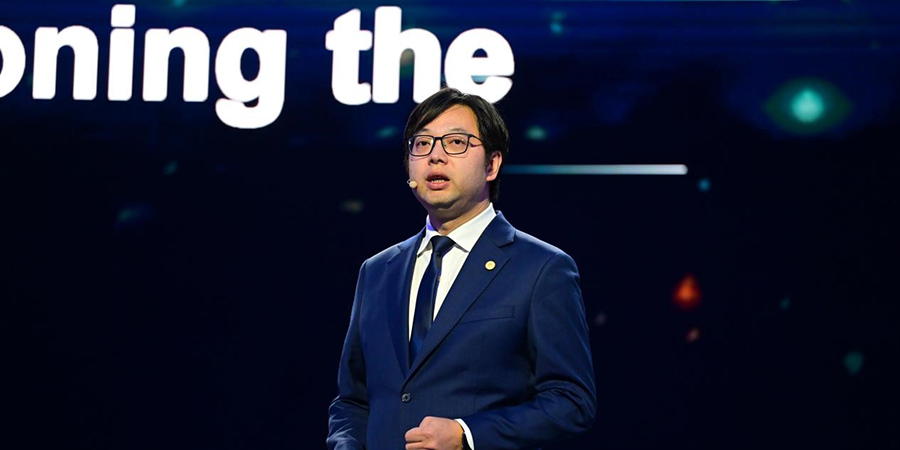At LEAP 2025, the convergence of 5G-Advanced technology and artificial intelligence (AI) took center stage, marking a pivotal moment in Saudi Arabia's digital transformation journey.
During his keynote address, Fang Xiang, Vice President of Huawei Wireless Network Product Line, presented a comprehensive roadmap for Saudi Arabia's evolution into an AI-driven society. This vision comes at a crucial time, as global AI smartphone adoption is projected to surge, with the International Data Corporation (IDC) forecasting annual shipments exceeding 900 million units by 2028.
The Dawn of Ubiquitous Intelligence
The transformation is already visible across Saudi Arabia's digital landscape. Recent data revealed that the Kingdom's AI market is growing 28% annually, resulting in a market volume of over USD 9 billion by 2030. This rapid adoption reflects a broader trend where AI applications are becoming as fundamental as voice calling and the mobile internet.
"Mobile AI is not just an addition to our digital infrastructure; it's a cornerstone of our future economy," Fang emphasized during his presentation. The implications of this shift are profound, extending far beyond conventional smartphone applications to reshape entire industries.
Reshaping Human-Machine Interaction
The evolution of human-machine interaction represents one of the most significant transformations on the horizon. The traditional touch-based interface paradigm is giving way to a more sophisticated, omni-modal approach that incorporates natural language processing (NLP), gesture recognition, and emotional intelligence. This shift demands substantial improvements in network capabilities. To enable seamless human-machine collaboration, end-to-end latency must be maintained between 400-600 milliseconds. The network requires a tenfold enhancement in uplink bandwidth to support multi-modal interactions, while connections must expand beyond human-to-human communications to encompass human-to-machine and machine-to-machine interactions.
Industry analysts predict that by 2031, the global gesture recognition market will expand to USD 89.3 billion (USD 48.22 billion from touch-based and USD 41.08 billion from touchless), marking a significant departure from current interface paradigms.
The transformation extends to content creation and consumption patterns. The shift from static to dynamic, personalized content generation represents a fundamental change in how information is produced and consumed. This evolution is driven by several key factors. AI-generated content (AIGC) is expected to increase interactive information volume by more than 100 times, while the emergence of omni-modal content formats, including 3D and spatial videos, is reshaping user experiences. Real-time content customization based on individual user preferences and contexts is becoming the norm rather than the exception.
Building the Infrastructure for Tomorrow
Huawei’s commitment to Saudi Arabia’s digital transformation is evident in its efforts to construct a world-leading 5G-A network infrastructure. The initiative focuses on evolving all frequency bands to 5G to maximize spectrum efficiency while integrating AI-based telecom foundation models for Level-4 network autonomy. These efforts are coupled with continuously enhancing network quality, spectral and energy efficiency.
The results are already impressive. Saudi Arabia's 5G-A infrastructure now ranks among the world's top five, characterized by industry-leading energy efficiency metrics and operational cost optimization. The network's performance indicators suggest it's well-positioned to support the kingdom's vision of a 10 Gbps society by 2030.
The economic impact of this transformation is expected to be substantial. Industry experts project that by 2030, the cost of Mobile AI inference will approach that of a standard voice call, democratizing access to AI capabilities across society.
Challenges and Opportunities
While the path forward is promising, it's not without challenges. The transition to Mobile AI requires careful consideration of data privacy and security concerns, workforce reskilling and adaptation, infrastructure reliability and maintenance, and cultural integration of AI technologies. However, these challenges also present opportunities for innovation and leadership in the global digital economy. Saudi Arabia's aggressive investment in digital infrastructure and human capital positions it uniquely to address these challenges while capitalizing on the opportunities they present.
As Saudi Arabia continues its journey toward Vision 2030, integrating Mobile AI technologies will become increasingly crucial. The collaboration between technology leaders such as Huawei and Saudi stakeholders represents a fundamental reimagining of how society interacts with digital systems.
The success of this transformation will depend not only on technological advancement but also on the ability to create an ecosystem that nurtures innovation, supports skill development, and ensures equitable access to AI capabilities. With its current trajectory and strategic partnerships, Saudi Arabia appears well-positioned to emerge as a global leader in the Mobile AI era.
Also Read: Zain, Huawei Present New Service for Saudi SMEs
Intresting Read: Saudi Arabia’s AI Revolution: Why the World is Watching in 2025










